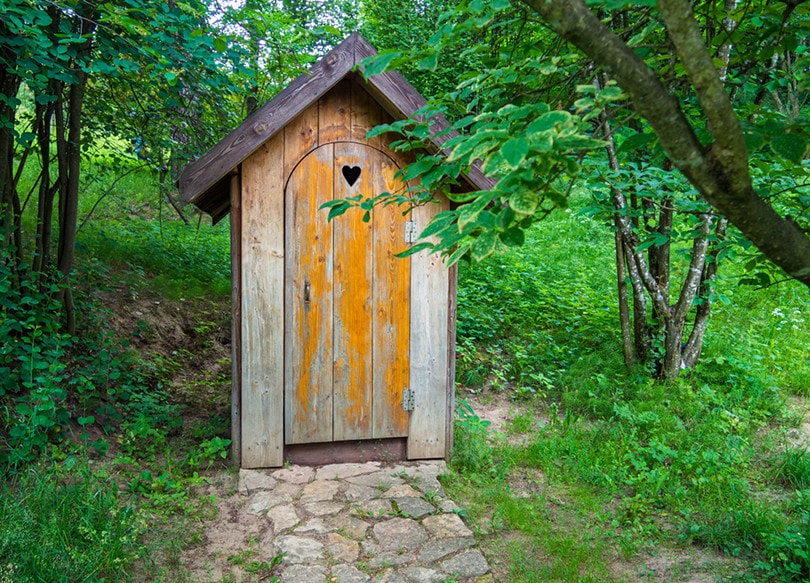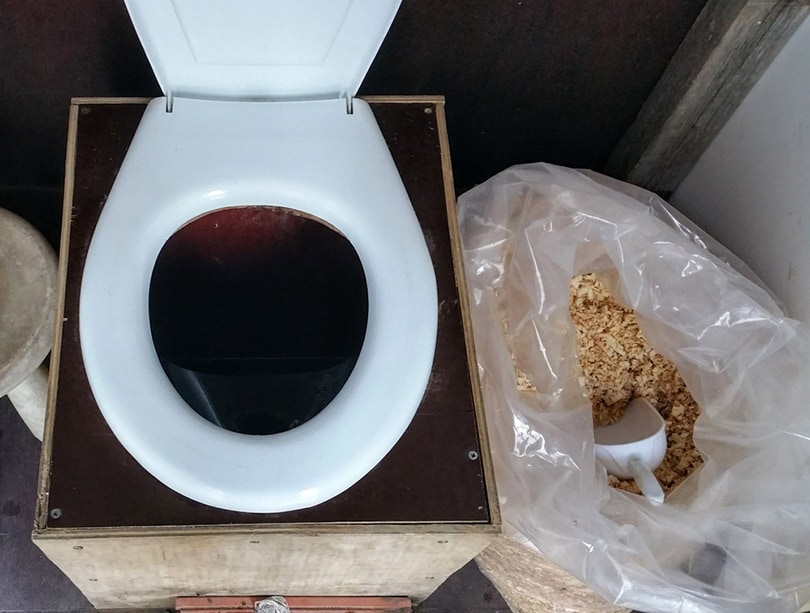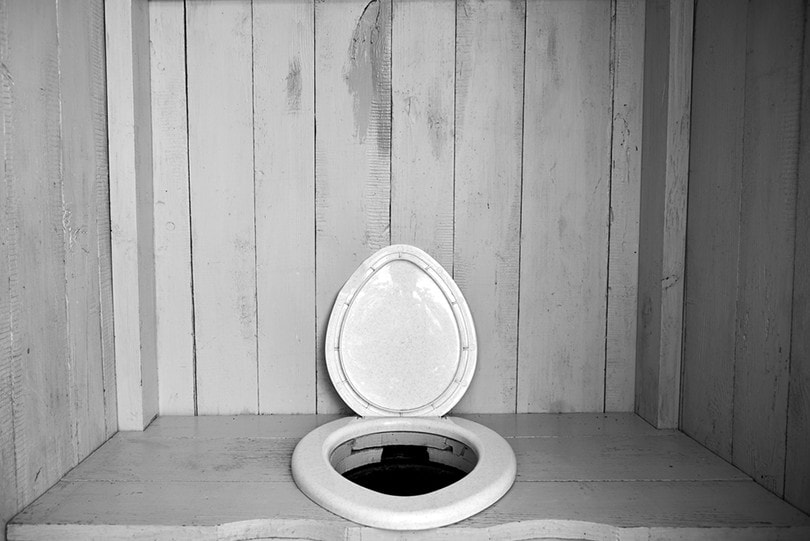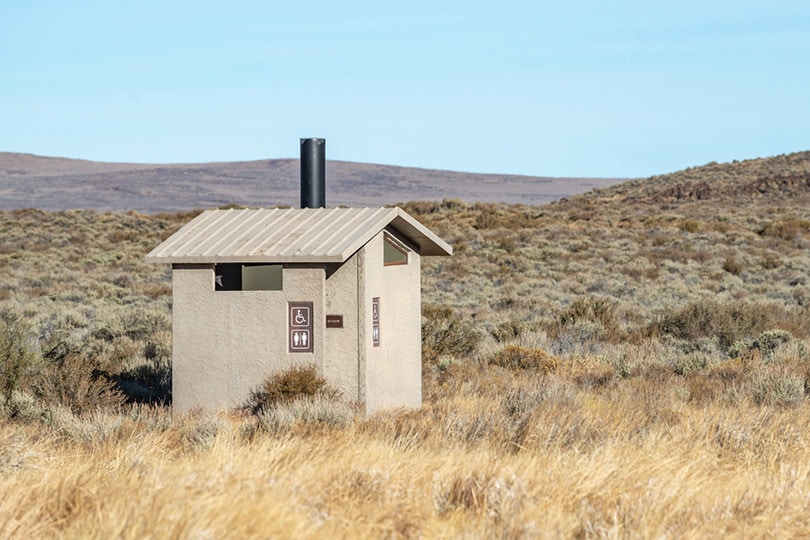11 Pros & Cons of a Composting Toilet (2025 Guide)
-
Jeff Weishaupt
- Last updated:

Environmentally friendly products are the talk of the town these days. From adopting a sustainable lifestyle to reducing landfill waste, people are now looking for multiple ways to treat mother nature well. For instance, many people have replaced traditional toilets with composting toilets to minimize water waste.
If you’re new to this invention, a composting toilet looks similar to a conventional toilet. But it removes human waste without consuming water! That’s why people opt for this smart device to create a sustainable home and reduce water waste.
As exciting as composting toilets may sound, you must know their pros and cons before installing them in your home. Don’t know where to start? This guide will address all your doubts about this cool invention to help you make an informed decision.
What Is a Composting Toilet?
Let’s start with the basics: what is a composting toilet, and how does it work? Composting toilets may look like traditional toilets, but their working is entirely different. They break down human waste with the help of aerobic bacteria. The process is pretty similar to outdoor or garden composting.
The user adds carbonized resources to the toilet, including mulch, leaves, or stems, to convert the waste into a product similar to traditional fertilizer. The primary processes performed here are decomposition and evaporation.
Since the toilet doesn’t use water, it separates solid and liquid waste using gravity and slope. The composting toilet also ensures ventilation by allowing oxygen to reach the composting chamber. This keeps the organisms preserved and releases the odor into the environment.
People also like the composting toilet because it can be installed anywhere. So, whether it’s a treehouse or a beach hut, you can use these toilets in both places.

6 Pros of a Composting Toilet
Composting toilets come in varying prices, features, and sizes to suit people with different needs. Below are six of its pros to help you make the right choice:
1. Affordable and Quick Installation
A composting toilet for residential areas costs under $1,000. Comparatively, traditional toilets require septic installation, which costs between $1,500–$5,000. The price may vary depending on your state, area, and property configuration. This amount adds up to an extra $300–$500 for the toilet.
Composting toilets also have very few installation requirements, making them easier and quicker to install. If you know a thing or two, you may not even need a professional for the installation. But with traditional toilets, you will surely need an expert plumber to get the job done. That’s an additional expense!
2. Negligible Impact on the Property
Composting toilets pose minimal effects on the place where they are installed. Their compost should not be used on garden soils as it can spread diseases. However, it is vital for the health and growth of plants on the property and can also minimize water consumption.
With traditional toilets, you may be wasting 1.5–3 gallons of water per flush. This means if you flush the toilet six to eight times a day, it will consume about 9–24 gallons of water daily. That’s a lot!
A composting toilet can help you save more than 7,000 gallons of water a person each year. But, of course, the exact amount of water you’d be saving monthly or daily would depend on your household’s usage.

3. Convenient Placement
Since composting toilets don’t need a water connection, you can place them anywhere. This makes them highly convenient for off-grid locations or places where plumbing connections are not readily available.
Also, these toilets are pretty compact and come in varying sizes. So, you won’t have spacing or sizing issues.
4. Minimal Maintenance
The compost of these toilets requires minimal maintenance work. Compared to other types of composting, human waste compost maintains a balanced moisture level on its own within the toilet’s basin. That’s where the compost is stored. You don’t need to keep the compost wet.
You may have to turn the compost to allow it to mix manually. But that’s only applicable to some composting toilets. It’s recommended to buy those models that fulfill the current American National Standards Institute’s criteria to enjoy maximum efficiency.

5. Long-Term Warranties
Many composting toilets come with a lifetime warranty. But generally, all manufacturers offer a long-term warranty on these toilets. Considering the costs they save by conserving water, a composting toilet is more like an investment that pays off instantly.
6. Less Burden on the Existing Plumbing Systems
Larger homes with multiple bathrooms have very high septic requirements. Thus, you can reduce the burden on your home’s current plumbing systems by installing composting toilets.
Composting toilets will redistribute the water and waste to other parts of your home. This will support waste recycling without overwhelming your home’s existing plumbing systems.

 5 Cons of a Composting Toilet
5 Cons of a Composting Toilet
Composting toilets are undoubtedly innovative, but they do have certain limitations. The five common cons of a composting toilet include:
1. Not Every Toilet Controls Odor Well
If you’re planning to install a centralized composting toilet system, you should rethink your decision. That’s because many people complain about inefficient odor control in centralized systems. So, your ideal choice should be a compartmentalized composting toilet system.
If you still face odor-related issues, you can use toilet-friendly odor-removal products and add them to the compost. It will help you reduce bad smells quite well. But if it doesn’t work, a composting toilet can smell worse than an ordinary toilet.

2. Not So Easy to Use
Composting toilets have somewhat similar height and width as traditional toilets. People with an average height can easily use them. However, those with any health issue or difficulty in mobility may struggle to use these toilets.
Unfortunately, you can’t easily find a composting toilet taller than 17 inches. This means if you’re 6 foot or taller, you may have difficulties using these toilets as they come in a very limited height range.
3. Not Much Space-Saving Options
Many people opt for composting toilets for smaller areas, such as treehouses, cabins, etc., mainly because they don’t require plumbing. Of course, their compact size comes in handy, but that isn’t the primary factor. In fact, some composting toilets are even bigger than conventional ones.
These toilets also need unique components to work properly. If you have a small home, you may not have enough space to accommodate the entire toilet setup. To avoid this situation, always measure the space available in your home and get a composting toilet accordingly.

4. May Require Special Maintenance
Composting toilets keep collecting dry and wet waste in the basin. You’re more likely to notice this in a single-unit system. The basin already has dry waste, and the new waste keeps adding to it, resulting in different composition levels.
The inconsistent compost makes it hard for the toilet to divide the compost properly. As a result, you may have to consult a septic hauling service similar to traditional toilets. That can be a bummer.
5. Installation Permit Requirements
The international building codes allow composting toilets in different residential areas. However, you may face local code installation restrictions in some areas or communities. If you don’t have the permit, you can’t actually install your composting toilet, let alone use it.
It’s always recommended to contact your local city authorities and code enforcement agency to learn about the rules and regulations. It will help you make an informed decision regarding your toilet needs.

 Conclusion
Conclusion
A composting toilet is an innovative technology that seems promising for a sustainable home. However, it may not be ideal for every home.
Before investing your money into one, evaluate every aspect of composting toilets. If the pros outweigh the cons, these toilets can be your right choice.
To stay on the safe side, try installing a composting toilet in only one bathroom and see if it works. Doing so will allow you to smoothly return to the traditional system if composting toilets fail to impress you.
- https://positivenegativeimpact.com/pros-and-cons-of-composting-toilets#:~:text=Pros%20and%20Cons%20of%20Composting%20Toilets%201%20%E2%97%8F,…%207%20%E2%97%8F%20May%20Require%20Special%20Permits.%20
- https://greencoast.org/composting-toilet-pros-and-cons/
- https://vittana.org/12-composting-toilets-pros-and-cons
- https://www.smartwheater.com/how-much-water-does-the-average-person-use/
Featured Image Credit: aitoff, Pixabay
Contents
